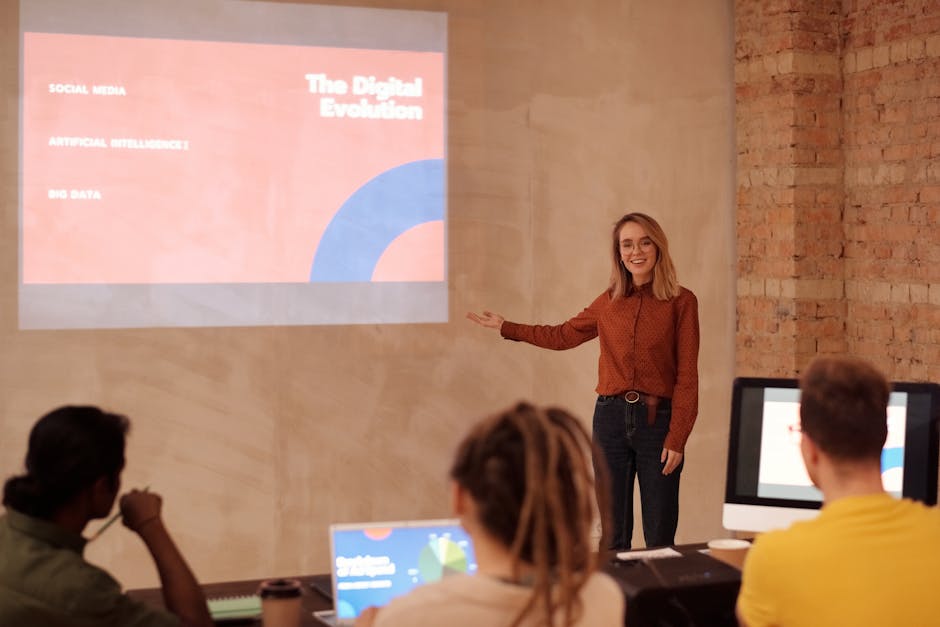Unlock The Invisible Workforce: Transform Business with AI Today
In today’s rapidly evolving corporate landscape, businesses are grappling with how to enhance efficiency while fostering a vibrant, empowered workplace. Enter the innovations of AI-powered automation, heralded as the driving force behind a new era of employee potential and organizational success. This transformative technology is not just about efficiency—it’s about unlocking the hidden talents and creativity of your team. Curious about how AI can transform your organizational dynamics? Let’s delve into the specifics of generating a variety of topics on AI tools and automation in business.
Understanding the Invisible Workforce

The term “Invisible Workforce” often refers to the untapped potential residing in your employees. While conventional wisdom might urge leaders to maximize productivity through traditional means, countless studies show that true innovation arises when teams feel engaged and appreciated. So, how can AI help in uncovering this hidden gem?
AI tools can analyze patterns in employee engagement, performance metrics, and feedback, thus pinpointing areas where individuals may struggle or shine. Harnessing this technology allows organizations to create a work environment that showcases each employee's strengths, effectively transforming them into an 'invisible workforce' capable of driving company growth.
Recognizing the Role of AI in Employee Empowerment

The integration of AI tools doesn't just free employees from mundane tasks; it simultaneously refines their focus on high-impact initiatives. When basic, repetitive tasks are automated, employees are left with more time to engage in creative problem-solving, strategic thinking, and collaboration. This empowered workforce is more likely to suggest innovative solutions and participate actively in the business’s growth.
According to research from Harvard Business Review, companies embracing AI in their operations see significant increases in employee satisfaction and overall productivity. When teams have the tools they need to succeed, they not only thrive but create a more engaging workplace culture.
To explore this intersection further, check out Turning Data Into Dreams, which provides a deeper dive into how businesses can leverage data for strategic advantages.
How AI Enhances Collaboration

Collaboration forms the backbone of any successful business. But how can AI nurture this essential element?
AI-powered platforms can facilitate seamless communication and collaboration among team members, regardless of their physical location. By synthesizing real-time data and providing insights into team dynamics, AI tools can identify synergy between employees, thus optimizing project workflows.
Tools that tailor project management to the unique strengths of each team member enable a more fulfilling collaborative experience. With automation easing menial tasks, employees can dedicate their brainpower to participate actively in discussions, brainstorming sessions, and decision-making processes.
Consider reading about The AI Symphony to unveil the benefits of automated tools that enhance collaboration within teams.
The Paradox of Automation

As we embrace AI, there’s often concern about its impact on creativity. Interestingly, studies suggest that automation doesn’t kill creativity; it enriches it. By automating routine tasks, employees have greater capacity for innovation and ideation.
With AI handling logistical tasks, workers can channel their efforts towards creative problem-solving, brainstorming, and strategic planning. This paved runway leads to an environment brimming with new ideas and fresh perspectives. By redefining work roles and activities, organizations can effectively dig deeper into the creative reservoir of their workforce.
To delve into this fascinating dynamic further, explore The Paradox of Automation.
Navigating Ethical Decision-Making

As AI tools become integral to business strategy, ethical considerations must also accompany their adoption. Ensuring that AI applications uphold company values and ethical standards is paramount. Organizations must develop frameworks to guide AI implementation responsibly, ensuring that technology supports rather than replaces the human element.
AI's role in decision-making is evolving, providing efficiency but also presenting ethical dilemmas. Therefore, fostering a culture of ethical awareness while utilizing advanced analytics promotes trust and transparency within an organization. For further insights, consider The AI Arbiter.
AI-Powered Predictive Analytics

One significant advantage of AI in the workplace is predictive analytics. These tools analyze historical data to predict future trends, employee performance, and engagement levels. When leaders understand their teams better, they can create targeted interventions to support workforce wellness.
By leveraging AI for predictive analytics, businesses can not only observe patterns but also act on them proactively. Employees feel the positive impacts through tailored support, leading to improved morale and productivity.
For the latest trends in workforce well-being, the article Harness AI-Powered Predictive Analytics might be of interest.
Fostering Employee Engagement

Engagement goes hand in hand with employee satisfaction. When employees feel valued and understood, they engage more deeply with their roles. AI-driven insights allow leaders to fine-tune their strategies for employee engagement.
Utilizing feedback loops through AI tools allows organizations to solicit and analyze feedback effectively. With insights readily available, businesses can adapt their culture and practices to better suit their workforce’s needs, reinforcing a sense of belonging and ensuring employees feel heard and valued.
Check out The Feedback Loop to uncover strategies for driving deeper employee engagement.
Employee Empowerment through AI

Empowering employees doesn’t just involve providing tools; it’s about a cultural shift in how organizations view their talent. Embracing AI leads businesses to discover diverse talent capabilities previously overlooked. This empowerment can significantly contribute to employee well-being, as individuals understand their value within a broader organizational context.
Tools that enhance work-life balance, well-being, and personal development initiatives are critical components of a thriving employee experience. Globally recognized methodologies indicate a notable correlation between AI adoption and improvements in workplace morale and productivity.
The piece on Transforming the Employee Experience paints a picture of how AI can redefine roles, emphasizing the importance of a thriving workplace.
The Future of AI in Business

As we look ahead, the roles of AI in business will expand and evolve. Companies that prioritize adopting AI tools will likely witness unprecedented growth. The potential to unlock creativity, improve employee conditions, and enhance overall business efficiency is boundless.
AI is set to reshape industries, creating opportunities to harness human capital strategically. For leaders, investing in these technologies represents not just financial expansiveness but a cultural evolution within their organizations.
Final Thoughts: Embrace the Invisible Workforce
As we navigate this landscape, businesses must actively seek to channel the invaluable potential of their workforce. By integrating AI tools thoughtfully, organizations can promote an authentic environment where employees thrive, fostering creativity and enhancing collaboration. Amidst this technological landscape, remember that the heart of your operation is the people making it possible.
Make the commitment today to support and empower your teams. Unleash their strengths with AI, and watch your organization rise to heights previously thought unattainable, guiding you through an era of competitive advantage and employee satisfaction.
If you’re intrigued by the ongoing evolution of AI in workplace dynamics, don’t hesitate to explore further topics that resonate with your vision. Resources like Unlocking the Invisible Workforce further detail how automation can transform traditional business practices into innovative solutions for future success.



